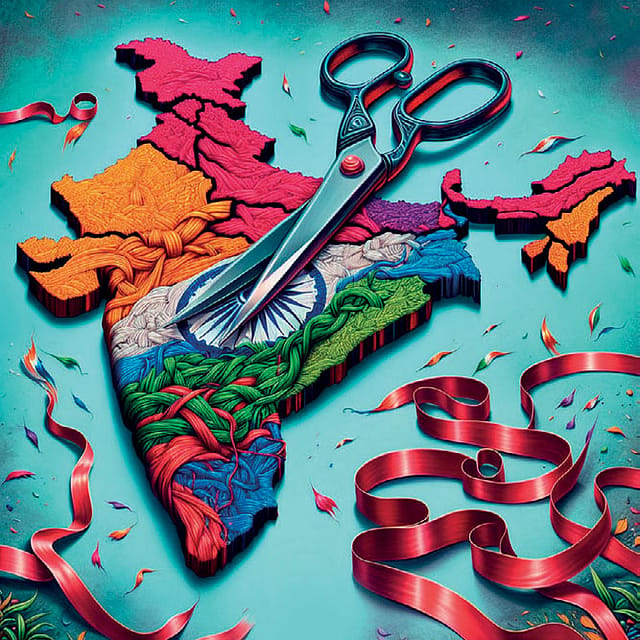Bridging the Gap

IT HAS OFTEN BEEN suggested that India has historically had a weak state and a strong society. The stark contrast between the resilience and diversity of its society and the challenges and limitations faced by its state institutions has coloured the way India is viewed both within and externally. India’s inherently democratic ethos, strong social fabric, dynamic entrepreneurial spirit, and cultural resilience have made the country garner significant global attention. At the same time, India’s challenges related to state capacity exemplified by the government’s ability to effectively implement policies, deliver services, and maintain law and order, have hobbled the nation.
India’s state institutions face hurdles in harnessing the nation’s societal energies towards sustainable development, effective governance, and inclusive growth. Addressing these institutional weaknesses and governance deficits is crucial for India. These are reflected in institutional weaknesses with state institutions, including its bureaucracy, judiciary, and law enforcement agencies, often suffering from inefficiency, corruption, and bureaucratic red tape. This weak state capacity also exhibits itself in infrastructure deficits, fragmented governance as well as in responding effectively to internal and external security challenges.
As India continues to rise economically, the state capacity issue is going to be our most pressing challenge. India remains a land of contradictions— an economic powerhouse and one of the fastest growing economies in the world and yet it struggles to deliver basic services to some of its most vulnerable citizens. And it is here that Karthik Muralidharan’s monumental work, Accelerating India’s Development: A State-led Roadmap for Effective Governance, makes an important contribution by using empirical data and conceptual frameworks to support building a more effective and responsive state to meet the aspirations of a 21st-century India.
2026 New Year Issue
Essays by Shashi Tharoor, Sumana Roy, Ram Madhav, Swapan Dasgupta, Carlo Pizzati, Manjari Chaturvedi, TCA Raghavan, Vinita Dawra Nangia, Rami Niranjan Desai, Shylashri Shankar, Roderick Matthews, Suvir Saran
For Muralidharan, India has a crisis of state capacity with the state performing miserably in six key systemic elements— collecting, analysing and acting on data; recruiting, training, and managing public personnel; ensuring quality of public expenditure; collecting adequate revenue and doing so efficiently; optimising tasks across layers of federal governance structure; and effectively leveraging non-state actors. Building a more effective Indian state is critical to achieving long-term development goals and without this India, with all its achievements, will not be able to translate its aspirations to practical reality. Most of these arguments are not new but what Muralidharan has done with masterly precision is to bring all the data together to outline a practical roadmap for actions.
What is also interesting in this book is the focus on state-level governance. Since India is witnessing some degree of competition among states on governance metrics, we need to push for more effective state governments. One of the major achievements of the Modi government over the last decade has been to make good governance part of political and electoral discourse. Even parties that have always relied on caste combinations to manage their electoral successes have now been forced to talk the language of development. But there is a long road ahead and pushing for more effective delivery models at the state level should be a priority.
The other aspect that is often neglected but this book draws our attention to is the issue of public-sector personnel management. As the author rightly points out, “We cannot build a more effective Indian state without improving the quantity, quality, autonomy, and accountability of public employees.” Though the book makes some very sensible suggestions to improve the management of public employees, this is one area which is difficult because those who must implement these ideas are the ones whose power and prestige would be affected by their implementation. Even simple reforms have not been easy to implement. The idea of lateral entry into bureaucracy was killed by the bureaucracy itself, quietly but very efficiently. Even a prime minister as powerful as Narendra Modi has not been successful in bringing about major changes in the domain of personnel management.
But as Muralidharan says India has no choice but to be optimistic and try. And this book is everything that Indian policy makers need to ensure that they rise to this moment in India’s historical evolution.

